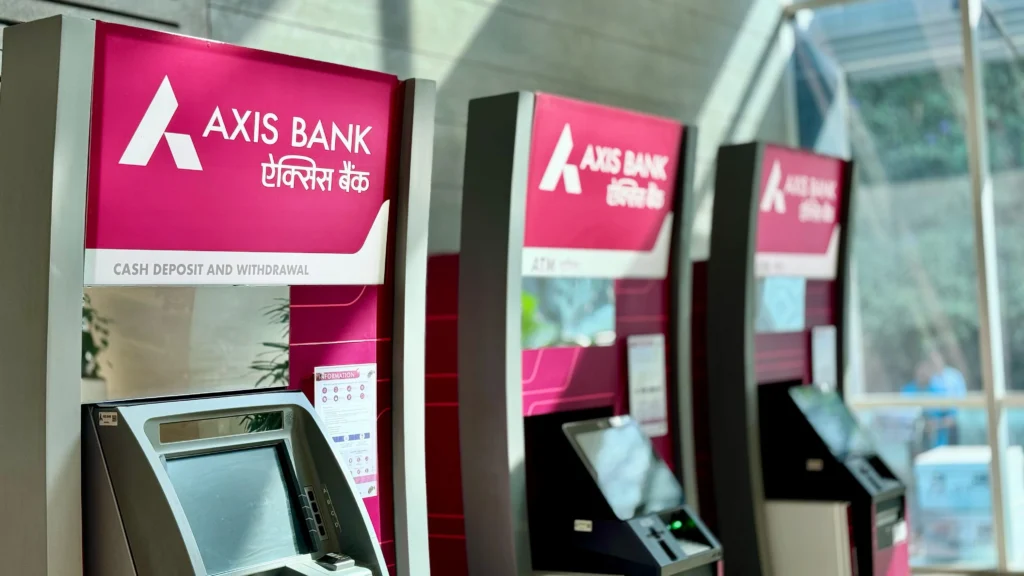
Axis Bank Q2 Review: A Mixed Bag of Strong Loan Growth and One-Time Provisioning Impact
Axis Bank Ltd. reported a good quarter with strong loan growth at 5% QoQ, limited net interest margin contraction at 7 bps QoQ (to 3.73%), and contained NPA related credit costs at 75 bps. Overall provisions at 130 bps were, however, impacted by priority sector lending declassification of ~Rs 240 billion of loans, resulting in Rs 12 billion or 5% additional one-time standard provisions.
Loan Growth and Net Interest Margin: A Positive Trend
The bank’s loan growth has been a positive trend, with a 5% QoQ increase. This is a significant improvement from the previous quarter, and it shows that the bank is on the right track in terms of lending. The net interest margin, although contracted by 7 bps QoQ, is still at a healthy level of 3.73%. This is a testament to the bank’s ability to manage its interest rates and maintain a stable margin.
For investors looking to invest in the banking sector, Axis Bank’s Q2 results are a positive sign. The bank’s strong loan growth and limited net interest margin contraction make it an attractive option for those looking to buy stocks in India.
Provisions and Credit Costs: A Challenge Ahead
However, the bank’s provisions and credit costs are a challenge ahead. The one-time provisioning impact of Rs 12 billion or 5% is a significant amount, and it will likely affect the bank’s bottom line. The bank’s credit costs are also higher than its peers, which is a concern.
Despite this, the bank’s contingent provision buffers at ~40 bps are a positive sign. This means that the bank has a cushion to absorb any potential losses, and it will help to mitigate the impact of the one-time provisioning.
Dolat Capital’s View: An ‘Add’ Rating
Dolat Capital has maintained its ‘Add’ rating on Axis Bank, citing the bank’s strong loan growth and limited net interest margin contraction. The brokerage firm believes that the bank’s consistency on core metrics will be key to narrowing the valuation gap vs peers.
For investors looking to invest in Axis Bank, Dolat Capital’s view is a positive sign. The bank’s strong fundamentals and the brokerage firm’s ‘Add’ rating make it an attractive option for those looking to invest in the Indian stock market.
Valuations: Undemanding but with a Catch
Axis Bank’s valuations are undemanding, trading at 1.5x Sep-27E P/ABV (RoA/RoE of 1.7%/15%). However, the bank’s credit costs are higher than its peers, which is a concern. The bank’s contingent provision buffers at ~40 bps are a positive sign, but the one-time provisioning impact is a challenge ahead.
For investors looking to invest in banking sector stocks, Axis Bank’s valuations are a mixed bag. The bank’s strong loan growth and limited net interest margin contraction are positive signs, but the one-time provisioning impact and higher credit costs are concerns.
Conclusion: A Healthy Quarter but with Challenges Ahead
In conclusion, Axis Bank’s Q2 results are a mixed bag. The bank’s strong loan growth and limited net interest margin contraction are positive signs, but the one-time provisioning impact and higher credit costs are concerns. Dolat Capital’s ‘Add’ rating is a positive sign, but investors should be cautious of the challenges ahead.
For investors looking to stay ahead of market news and make informed investment decisions, it’s essential to keep a close eye on Axis Bank’s progress. The bank’s ability to manage its provisions and credit costs will be crucial in determining its future performance.
